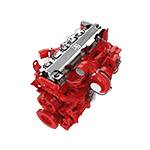8 月 . 05, 2024 10:47 Back to list
Exploring the Benefits and Process of Upgrading from Brake Drums to Disc Brakes
Converting from Brake Drum to Disc A Comprehensive Overview
The evolution of automotive braking systems has made significant strides over the years, with many modern vehicles transitioning from drum brakes to disc brakes. This conversion not only enhances performance and safety but also improves maintenance and overall vehicle handling. In this article, we will explore the advantages of converting from brake drums to discs, the process involved, and considerations to keep in mind.
Advantages of Disc Brakes
1. Improved Stopping Power Disc brakes generally offer better stopping power compared to drum brakes. The design of disc brakes allows for better heat dissipation, which is crucial during high-speed braking. When the brakes are applied, the friction generates heat, and the exposed nature of the disc allows it to remain cooler than a drum that encloses the brake shoes.
2. Better Performance in Wet Conditions Drum brakes can trap water and mud, which can reduce braking efficiency. Disc brakes, however, are exposed and can shed water more effectively, ensuring reliable performance even in adverse weather conditions.
3. Reduced Maintenance While both systems require regular maintenance, disc brakes tend to have a longer lifespan. Drum brakes can wear down faster, particularly the brake shoes, and replacing them can be more labor-intensive. In contrast, disc brakes are easier to inspect, and the pads can often be replaced without removing the entire assembly.
4. Consistency and Modulation Disc brakes offer better modulation, allowing drivers to apply varying degrees of braking force. This is particularly beneficial in performance driving or when navigating difficult terrains. The design of disc brakes provides a more consistent feel under foot, improving driver confidence.
Conversion Process
Converting from drum brakes to disc brakes involves several steps and may vary based on the vehicle's make and model. Here are the general steps involved
brake drum to disc conversion

1. Assess Compatibility Ensure that your vehicle can accommodate disc brakes. This typically involves checking the wheel size and the existing suspension setup, as modifications may be necessary.
2. Gather Necessary Components The conversion will require specific parts, including disc brake calipers, rotors, brackets, and sometimes new hubs. It’s essential to choose high-quality components, ideally from reputable manufacturers, to ensure safety and durability.
3. Remove Drum Brakes Begin by safely jacking up the vehicle and removing the wheel. Detach the drum brake assembly, taking care to note how everything is installed, as this will be useful for assembly of the new parts.
4. Install Disc Brake Components Once the drum brakes are removed, install the rotor onto the wheel hub. Next, attach the caliper brackets to the hub and install the calipers over the rotors. Be sure to use the appropriate hardware and follow the manufacturer’s instructions.
5. Bleed the Brakes After installation, it’s crucial to bleed the brake system to remove any air that may have been introduced. This ensures that the brake fluid can exert maximum pressure on the calipers.
6. Test the System Once everything is installed and bled, perform a thorough inspection and take the vehicle for a test drive to ensure everything is working correctly. Pay attention to the braking performance and look for any unusual noises or behaviors.
Considerations
While the conversion from drum to disc brakes offers numerous advantages, it is essential to consider the costs involved. While some may view it as an investment in safety and performance, others may need to evaluate how it fits into their overall vehicle maintenance budget. Moreover, it’s advisable to have the conversion done by a professional mechanic, especially if you’re unfamiliar with brake systems.
In conclusion, converting from brake drums to discs can significantly enhance a vehicle’s braking performance, safety, and maintenance efficiency. With proper planning and execution, vehicle owners can enjoy the benefits of a modern braking system that meets today’s driving demands.
-
Brake Drum for Kamaz Trucks Durable OEM Replacement & High Performance
NewsMay.30,2025
-
Brake Drum Man High-Quality Drum Brake & Shoe Solutions
NewsMay.30,2025
-
High-Performance Brake Drum for Kamaz Trucks Durable Drum Brake Components
NewsMay.29,2025
-
Brake Drum Man High-Quality Drum Brake Drums & Brake Shoes
NewsMay.29,2025
-
Brake Drum MAZ High-Performance & Durable Replacement Parts
NewsMay.29,2025
-
heavy truck brake drums
NewsMar.07,2025
